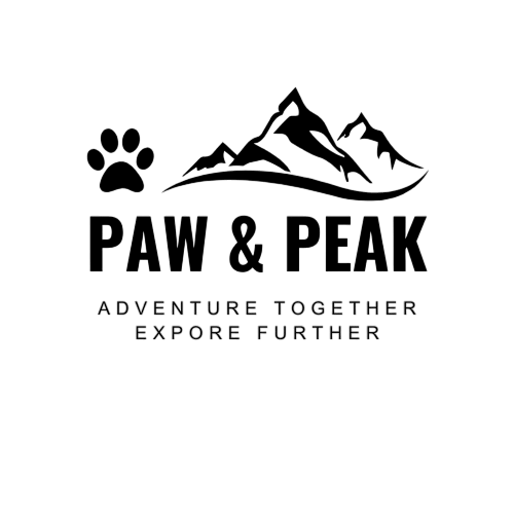Leave No Trace: Responsible Pet Ownership in Nature


Products That Help Minimize Impact
Earth Rated Dog Poop Bags - Extra-thick, leakproof bags with easy-tie handles
Stasher Reusable Silicone Bag - Perfect for carrying waste when trash cans aren't available
ROG Pet Travel Water Filtration Bottle - Filter natural water sources safely for your pet
Ruffwear Knot-a-Long Leash - Adjustable leash that keeps pets on trail
Kurgo Tru-Fit Smart Harness - Provides control without strain or pulling on sensitive areas
The pristine alpine meadow stretched before us, wildflowers nodding in the mountain breeze – a scene straight from a nature photographer's dream. Then I spotted it: a bright blue poop bag left trailside, an artificial intrusion in this natural landscape. As outdoor enthusiasts who adventure with our pets, we bear a special responsibility to minimize our combined impact on the natural spaces we love. The principles of Leave No Trace aren't just for human hikers; they extend to our four-legged companions whose natural behaviors, when unmanaged, can significantly impact fragile ecosystems. Through years of adventuring with my Australian shepherd Willow, I've developed practical approaches to responsible pet ownership that preserve both the natural environment and the welcoming atmosphere for pets in outdoor spaces.
Waste management stands as perhaps the most visible aspect of Leave No Trace pet ownership. The myth that animal waste is "natural" and can be left in wilderness areas fails to account for the concentrated impact of pet waste along popular trails, which introduces foreign bacteria, parasites, and nutrients that can disrupt local ecosystems and contaminate water sources. My approach goes beyond the bare minimum of picking up waste – I use Earth Rated bags for their thickness and leakproof reliability, then double-bag in a dedicated odor-proof container carried specifically for this purpose. In areas without trash receptacles, this means packing out waste for the duration of our adventure, no matter how long. For multi-day trips, a small trowel allows for burying waste in appropriate locations (at least 200 feet from water sources, trails, and campsites) following the same guidelines as human waste disposal in wilderness areas. These practices require extra effort, certainly, but represent the baseline responsibility we accept when bringing domestic animals into wild spaces.
Wildlife disturbance represents another significant impact that responsible pet owners must actively mitigate. Even the most well-behaved dogs retain predatory instincts that can disrupt wildlife far beyond obvious chasing behavior. Willow's intense focus on a ground squirrel colony might seem harmless, but wildlife biologists have documented significant stress responses and behavioral changes in prey species simply from the presence of domestic dogs, even when leashed. This stress can affect feeding, reproduction, and energy conservation crucial for survival. My practice involves keeping Willow leashed in all wildlife-sensitive areas regardless of leash regulations, choosing trails strategically to avoid critical wildlife habitats during sensitive seasons, and training reliable recall commands for the occasional permitted off-leash areas. Special consideration goes to dawn and dusk adventures, when wildlife activity peaks and our presence creates the greatest potential disturbance.
Habitat preservation extends to vegetation and trail integrity, areas where pets can create surprisingly significant impacts. A dog bounding off-trail through sensitive alpine vegetation might cause damage that takes decades to recover in these slow-growing environments. Similarly, dogs digging at trail edges contribute to erosion and trail widening that degrades the experience for all users. I've trained Willow to understand boundary commands that keep her on established trails and reinforce these boundaries consistently throughout our adventures. When making camp, I establish clear boundaries within already-impacted areas, preventing additional vegetation trampling or disturbance to sensitive soils. These small but consistent practices reflect a fundamental truth of responsible recreation: our individual choices, multiplied across millions of pet owners visiting natural areas, collectively determine whether these spaces remain healthy and accessible to future generations of adventure companions.
The social dimension of Leave No Trace pet ownership acknowledges that our actions affect not just the natural environment but the experience of other outdoor enthusiasts and the future access of all pets to these spaces. This means respecting leash regulations even when my well-trained dog might handle off-leash situations appropriately, understanding that these rules exist for collective benefit rather than individual convenience. It means yielding trail right-of-way appropriately, keeping Willow controlled during encounters with other hikers, horses, or wildlife, and generally ensuring that our presence enhances rather than detracts from others' wilderness experience. Perhaps most importantly, it means modeling these practices openly but without judgment, knowing that educational example often proves more effective than confrontation in spreading responsible pet ownership ethics. As stewards of both our companion animals and the wild places we explore together, this comprehensive approach to Leave No Trace principles ensures that the natural world remains accessible, healthy, and welcoming for all the adventures yet to come.
Adventure Together. Explore Further. Paw and Peak.
Join Our Pack
Whether you're scaling peaks with your pup, camping with your cat, or simply enjoying local trails with your animal companion, you're part of our community. Follow our social channels for more information, share your own journey using #PawAndPeakAdventures.
The trail is calling—and this time, both you and your pet will be perfectly equipped for the journey.
Adventure Together. Explore Further. Paw and Peak.
Subscribe to Our Newsletter!
© 2025. All rights reserved.
